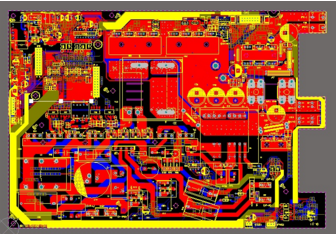FPC is also called flexible circuit board. The PCBA assembly and soldering process of FPC is very different from that of rigid circuit board. Because the hardness of FPC board is not enough, it is relatively soft. If you do not use a dedicated carrier board, it will not be able to complete the fixing and transmission. Basic SMT processes such as printing, placement, and furnace cannot be completed. Today, I will mainly introduce you to the fixation of FPC in the production process.
Before SMT, the FPC needs to be accurately fixed on the carrier board. In particular, it should be noted that the storage time between printing, mounting and soldering after the FPC is fixed on the carrier board is as short as possible. There are two kinds of carrier boards with positioning pins and without positioning pins. The carrier board without positioning pins needs to be used in conjunction with the positioning template with positioning pins. First put the carrier board on the positioning pins of the template,

so that the positioning pins are exposed through the positioning holes on the carrier board, and put the FPC piece by piece. The exposed positioning pins are then fixed with tape, and then the carrier board is separated from the FPC positioning template for printing, patching and welding. The carrier board with positioning pins has been fixed with several spring positioning pins about 1.5mm in length. The FPC can be directly placed on the spring positioning pins of the carrier board one by one, and then fixed with tape. In the printing process, the spring positioning pin can be completely pressed into the carrier plate by the steel mesh without affecting the printing effect.
Method one (fixed with single-sided tape): Use thin, high-temperature single-sided tape to fix the four sides of the FPC on the carrier board to prevent the FPC from shifting and warping. The viscosity of the tape should be moderate, and it must be easy to peel off after reflow soldering. There is no residual glue on the surface. If you use an automatic tape machine, you can quickly cut tapes of the same length, which can significantly improve efficiency, save costs, and avoid waste.
Method two (fixed with double-sided tape): first use high-temperature resistant double-sided tape to stick to the carrier board, the effect is the same as the silica gel board, and then paste the FPC to the carrier board, pay special attention to the viscosity of the tape not to be too high, otherwise it will peel off after reflow soldering When, it is easy to cause the FPC to tear. After repeated ovens, the viscosity of the double-sided tape will gradually decrease. If the viscosity is too low to reliably fix the FPC, it must be replaced immediately. This station is the key station to prevent the FPC from getting dirty, and it is necessary to wear finger cots for work. Before the carrier board is reused, it needs to be properly cleaned. It can be wiped with a non-woven cloth dipped in detergent, or an anti-static sticky roller can be used to remove surface dust, tin beads and other foreign objects. Don't use too much force when picking up and placing FPC. FPC is fragile and prone to creases and breaks.